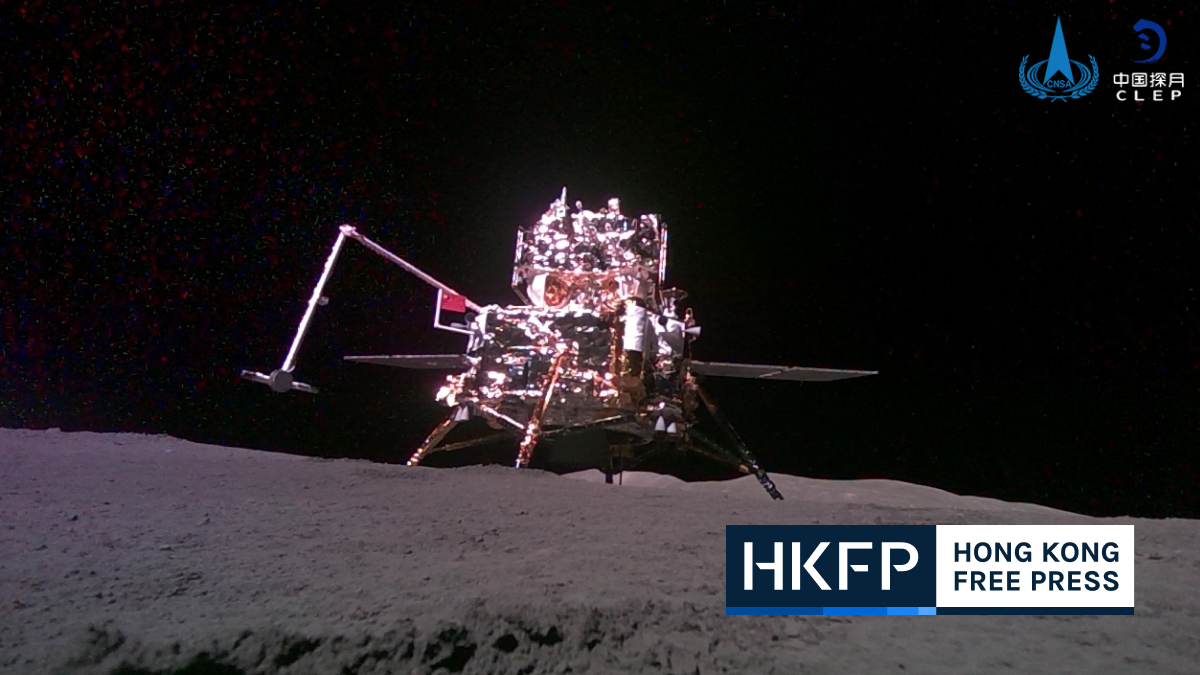- cross-posted to:
- science
- science@lemmy.ml
- cross-posted to:
- science
- science@lemmy.ml
Chang’E-6 samples will answer 6 important questions
- The age of SPA. The CE-6 mission is expected to collect the impact melt formed during the formation of SPA to accurately obtain its age.
- The age of the Apollo crater. There is a high probability that the CE-6 samples contain impact melt from the Apollo crater. The radiometric ages of SPA basin and Apollo crater can greatly promote the study of the early lunar impact flux.
- The major mineral composition of the lunar mantle. The formation process of SPA basin exposes lunar mantle material, but due to the lack of observation of large-scale olivine, some studies speculate that the main component of the lunar mantle is low-calcium pyroxene rather than olivine like the earth. Geochemical analysis of the samples will help to uncover this mystery.
- The lunar impact flux function. With the radiometric ages of the samples and the crater size-frequency distribution of the areas represented by the samples, the lunar impact flux function can be further optimized. This is the only sample from the far side of the Moon, and it is of great significance for studying the distribution of lunar impact fluxes.
- The volcanic eruption inside SPA basin. Current research shows that the thickness of the lunar crust inside SPA is small, but there is no large-scale basalt exposure inside. Geochemical research on CE-6 samples, especially the comparison with the chemical composition of basalt on the nearside of the Moon, will help solve this problem.
- The asymmetry of the Moon. By combining the above analyses, the long-standing issue of the asymmetry between the near and far sides of the Moon on the crust thickness, volcanic activity, internal structure is expected to be resolved, which has perplexed geologists for decades.
https://www.cell.com/the-innovation/pdf/S2666-6758(24)00101-2.pdf
Don’t you see, they’re collecting data to make artifical moons once they have the artifical suns down

They’ll make entire communist galaxies if we don’t stop them
The recent moon-landing scoreboard is “4 to 0.5” in favor of China, said Simone Dell’Angello, an Italian resercher who collaborated with Chang’e. “The first difference is that China has missions landing on the fucking moon.”
get our asses

The manned moon landings are one of the few legitimately cool things the U.S. has done, but people who love banging that drum are sounding more and more like Yankees fans bragging about all the titles their team won eons ago. The moon is a “what have you done for me lately” business.
Yeah the moon landings were an impressive historical feat, but if you’re trying to say something about modern-day America with them, they’re more of an embarrassment considering the current state of NASA 💀
reddit’s state department troll farms are very angry about this
Lol r/space has people seething over this. Some guy posted that China stole the idea of going to the moon from Americans.
This reminds me of a redditor when confronted with the fact that China has a robust mobile payment system and has weighted road traffic controls
He argued that nothing China does is impressive because the US did it first, and did it better, and that the US can implement those technology any time, but it simply chooses not to and not because it can’t.
Americans stole the idea of going to the moon from the Soviets.
Can’t wait for nasa to ask the US government for an exemption so they can ask China for a sample lol
dark side of Moon

Meanwhile at super
 land…more delays as space enshittification can’t safetly bring people home and send more enshittification to the rescue.
land…more delays as space enshittification can’t safetly bring people home and send more enshittification to the rescue.Best we can do is return samples of astronauts from the dark side of the ISS
BUT AT WHAT COST
300 million dollars












